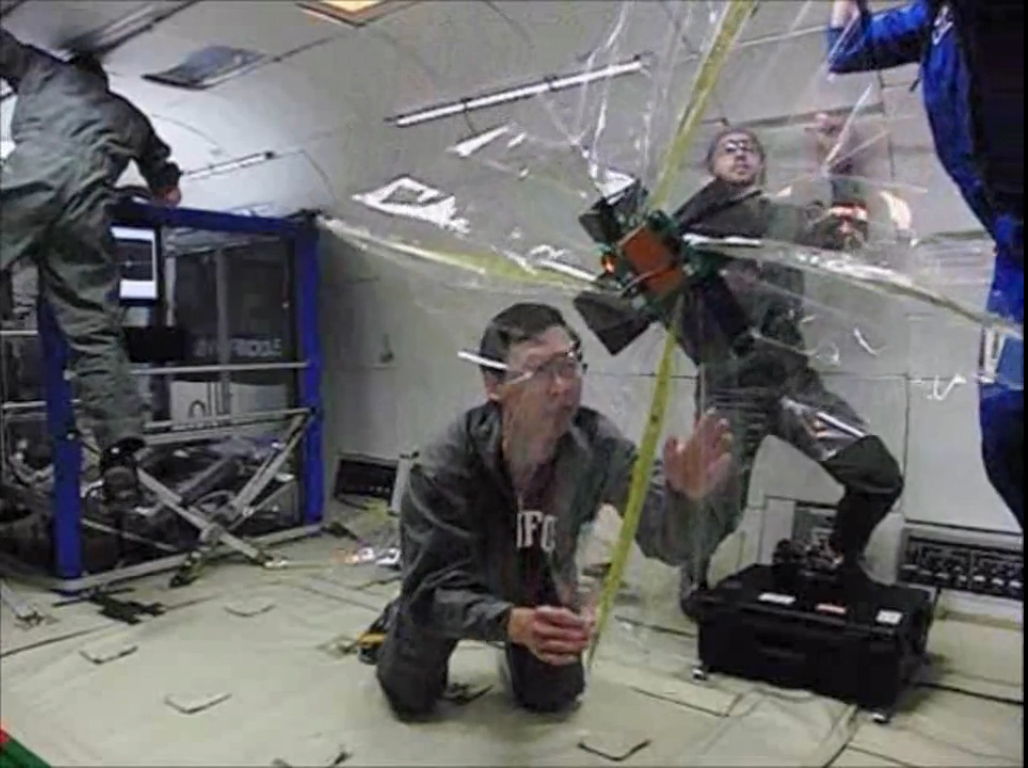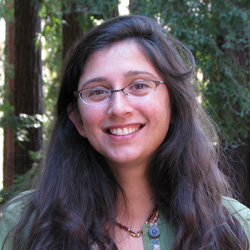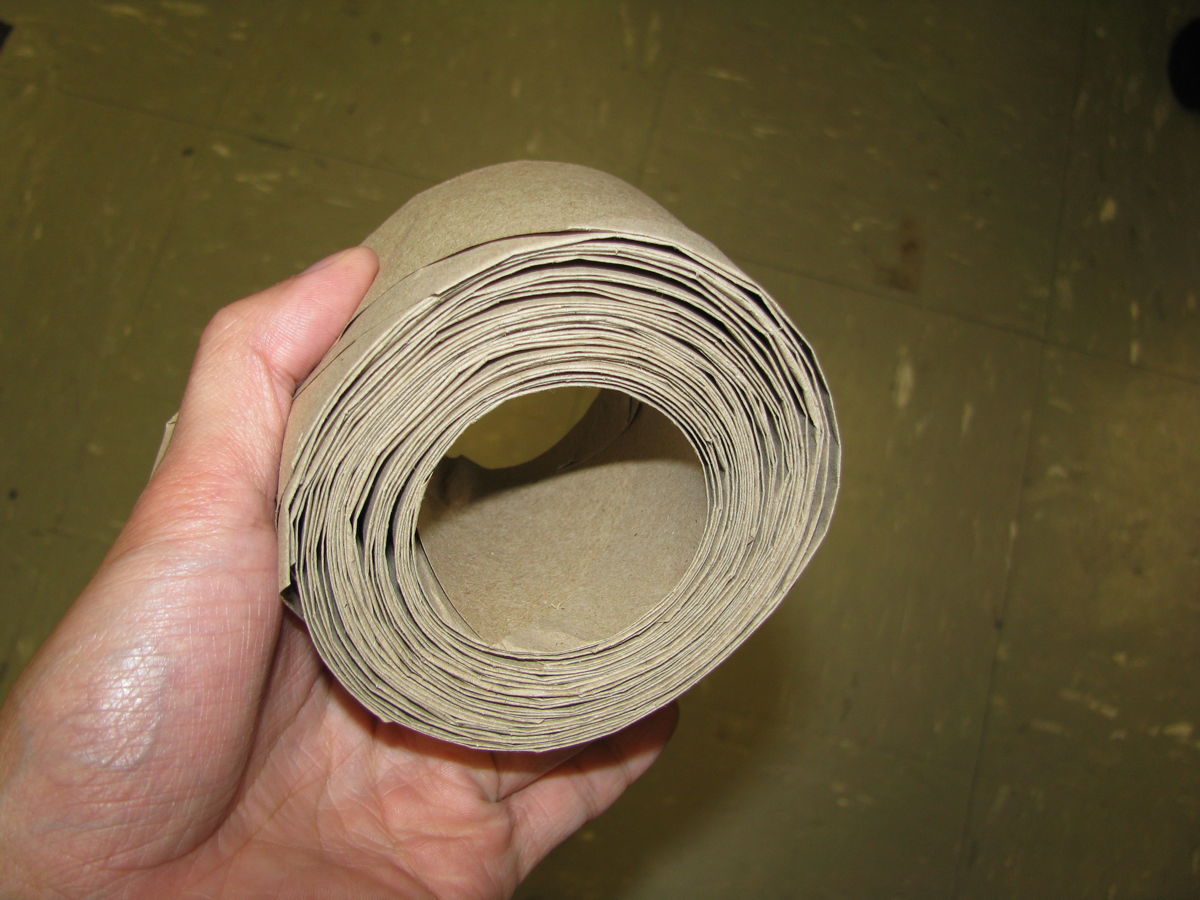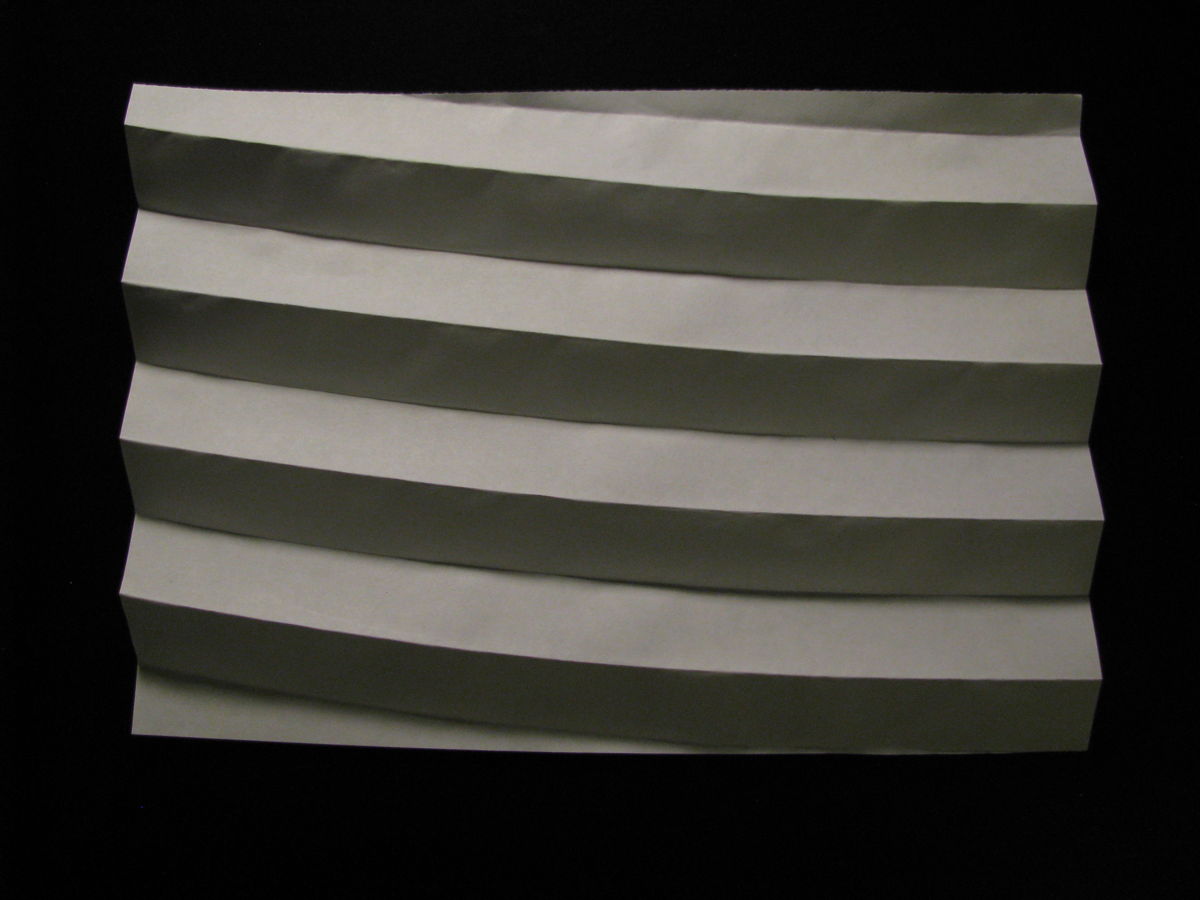Paper-Folding Trick May Help Tiny Satellites Use Sails in Space

A simple paper-folding technique could help tiny satellites unfurl big sails in space to detect micrometeoroid impacts, scientists say.
The folding strategy, described today (April 30) in the journal Proceedings of the Royal Society A Mathematical and Physical Sciences, could be used to pack relatively large sails into miniature satellites known as cubesats. When the sails pop out, they could provide a bigger area to catch meteoroid impacts.
"It's like putting a bigger windshield on your car to catch more bugs," said study co-author Nicolas Lee, an aerospace engineer at California Institute of Technology. [Tiny Satellites Launch from Space Station (Photos)]
Electronics wipeout by space rock
Sigrid Close, an aerospace engineer at Stanford University and Lee, then a graduate student who worked with Close, wanted to know whether meteoroid impacts disrupt electronics aboard spacecraft.
Meteoroids whiz through the solar system at tens of thousands of miles per hour, so even miniscule space rocks slam into spacecraft with incredible force.
"The impact speed is so fast it's not just like a bullet hitting a surface; it has enough energy to vaporize and ionize part of the material," Lee told SPACE.com.
Breaking space news, the latest updates on rocket launches, skywatching events and more!
The scientists worried that vaporization could cause weird electron motion that would essentially jolt a spacecraft with an electromagnetic pulse, wiping out electronics onboard.
But they needed to study many impacts to understand the process. They came up with a simple method for doing so.
The plan?
Squeeze a 10.9 square foot (1 square meter) sail to catch meteoroid impacts into a cubesat the size of a jack-in-the-box.
Pencil and paper
To figure out the best way to do that, Lee went back to basics: a paper and a pencil. He folded a sheet of paper like an accordion and wrapped it around the pencil. But the creases bunched up, making the folded paper too bulky.
Lee tried another approach, slightly changing the angle of curvature of the creases. That kept the folded sections from stacking up.
The researchers also tested that a folded sail would unfurl properly in zero gravity on a so-called "vomit comet," a special aircraft that dips and climbs to simulate a feeling of weightlessness for 20 to 25 second intervals. They created a video of the meteoroid sail unfolding in weightless conditions to chronicle the success.
Broad applications
The new findings are exciting, said Chris Biddy, the vice president for engineering at Stellar Exploration, Inc., a California-based company that is developing cubesat technology for the Planetary Society.
"What's really cool about it is you're optimizing how much material you can pack in a certain volume," Biddy told SPACE.com.
The packing technique could also help squeeze larger solar cells into cubesats, Biddy said. Solar panels give the tiny satellites a bit more thrust, allowing them to travel at higher speeds.
Getting big panels to work properly in the cubesats isn't trivial.
"Solar panel deployment is difficult, as seen by the deployment failures in the ISS [International Space Station] panels from a few years ago," James Cutler, an aerospace engineer at the University of Michigan in Ann Arbor, who was not involved in the study, wrote in an email.
Follow Tia Ghose on Twitter @tiaghose. Follow us @Spacedotcom, Facebook and Google+. Original article on SPACE.com.

Tia is the assistant managing editor and was previously a senior writer for Live Science, a Space.com sister site. Her work has appeared in Scientific American, Wired.com and other outlets. She holds a master's degree in bioengineering from the University of Washington, a graduate certificate in science writing from UC Santa Cruz and a bachelor's degree in mechanical engineering from the University of Texas at Austin. Tia was part of a team at the Milwaukee Journal Sentinel that published the Empty Cradles series on preterm births, which won multiple awards, including the 2012 Casey Medal for Meritorious Journalism.


